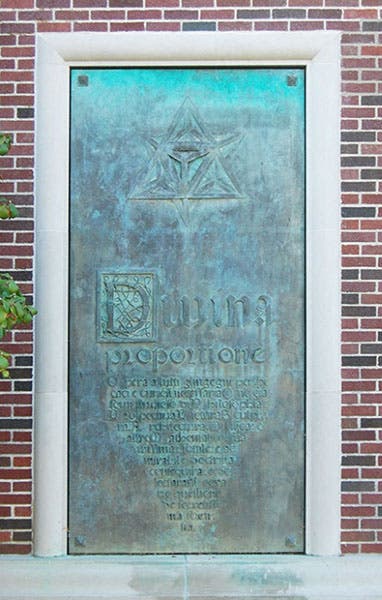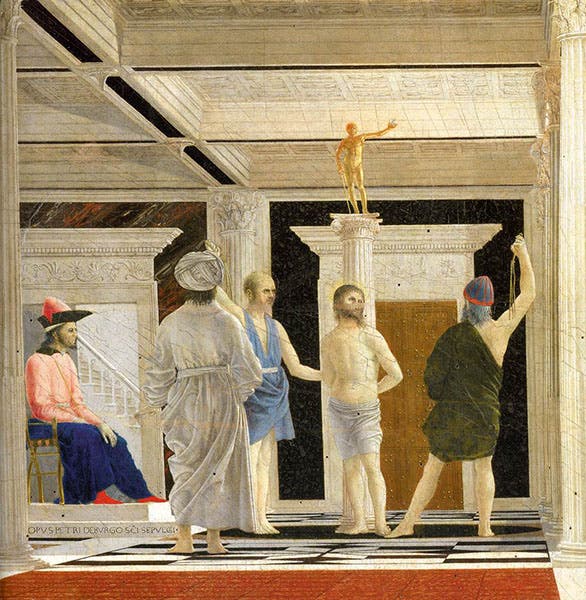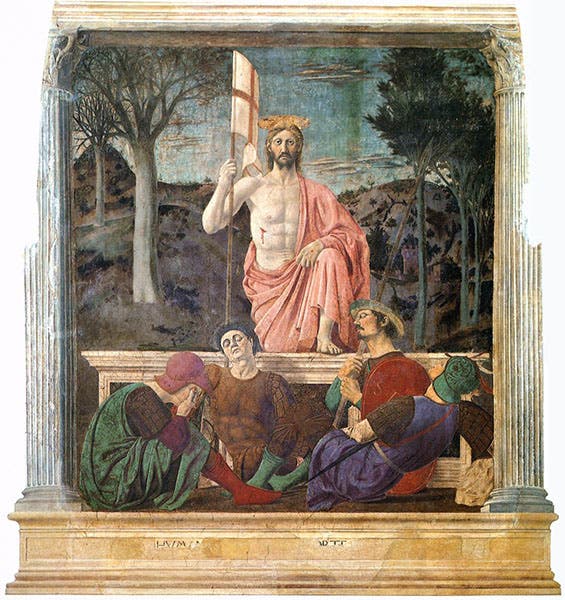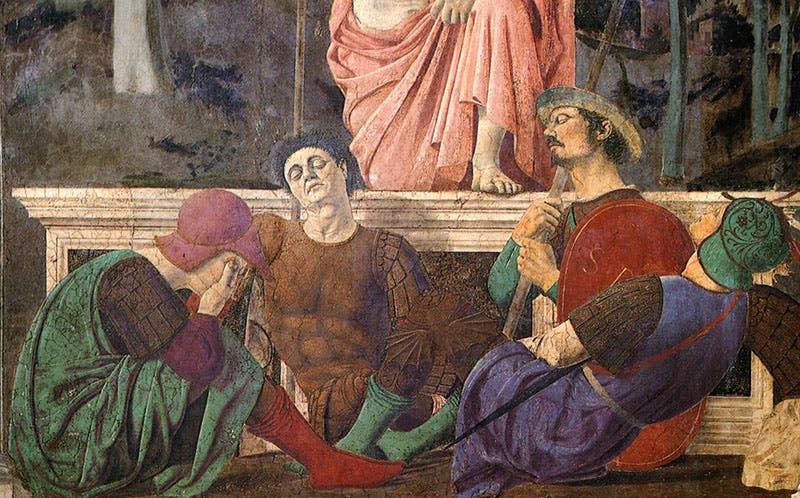Scientist of the Day - Piero della Francesca
On the very day that Columbus was sighting the New World, Oct. 12, 1492, Piero della Francesca, the great painter of Tuscan Italy, passed away in his home town of Sansepolcro, at the age of about 77. Piero was one of the first artists to fully utilize the new method of mathematical perspective that had been developed by Filippo Brunelleschi and Leon Battista Alberti in the 1420s and 1430s. Piero’s painting The Flagellation (ca. 1455-60) shows the visual power of this new technique, with the three foreground figures dominating the field of view, while the main theme of the flagellation of Christ, in the middle ground, is reduced considerably in size by the rules of perspective (see first image).
The tile terrace is so accurately drawn that it seems to recede indefinitely into the distance (see detail, second image). The painting hangs in the National Gallery of the Marches in Urbino, Italy, and surprises most who see it for the first time by its small size, since it is a panel only about 24 by 32 inches in size. There have been many identifications of the figures in the foreground; one of the most recent proposes that the young figure in red is the astronomer Regiomontanus, who had just arrived in Italy from Vienna, and who is well-represented in our History of Science Collection.
Piero also painted The Resurrection of Christ (1463-65), a fresco in the Sansepolcro town hall (third image), which is interesting because it has two viewing points, one from below, looking up at the guards, and one at the level of Christ’s face. The sleeping guard at center left has long been considered to be a self-portrait of the artist (see detail, fourth image).
Piero also wrote several treatises on perspective and geometry. One of these, on the five perfect solids, was translated by Luca Pacioli and included in his Divina proportione (1509), with illustrations provided by none other than Leonardo da Vinci. Images from this work, which we have in our Collection, were used for one of the bronze plaques on the exterior on the Library (fifth image).

Bronze wall panel based on Luca Pacioli, Divina proportione, 1509 (Linda Hall Library)
Dr. William B. Ashworth, Jr., Consultant for the History of Science, Linda Hall Library and Associate Professor, Department of History, University of Missouri-Kansas City. Comments or corrections are welcome; please direct to ashworthw@umkc.edu.









